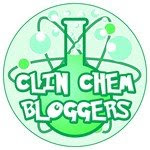Tuesday, August 25, 2009
RELAXING QUIZ
2.Transcribe RLU
3-4. Give the advantages of CLIA over the conventional colorimetric
method.
5. What is the labeled antibody used?
6. Why is there a need of washing the solution?
7-9. What is the relationship of emitted light to the amount of enzyme present and to the amount of unlabelled T4 in the sample?
10. What is the possible result if you fail to wash the solution?
In your own words, how will you explain the principle of CLIA?
Thursday, August 13, 2009
Chemiluminescent Immunoassay
Chemiluminescent Immunoassay
http://www.salimetrics.com/assets/images/all-things-saliva/immuno-assay/immunoassay10.gi
Principle of the test
Amount of anti-T4 antibody, a measured amount of patient serum, and a constant amount of T4 conjugated with horseradish peroxidase are all
After the incubation ( 1 Hour) at room temperature, the microtiter wells are washed five times by a washing solution. The purpose of washing is to remove the unbound T4 conjugate. And the washing procedure is said to be critical, why? Because insufficient washing will result in poor precision and falsely elevated absorbance reading. Then a certain solution of chemiluminescent substrate is being added and read the relative light units (RLU).
The result means that the intensity of the emitting light is directly proportional to the amount of enzyme present and is inversely proportional to the amount of unlabeled T4 in the patient’s sample.
http://www.biolsci.org/v03/p0274/ijbsv03p0274g02.jpg



